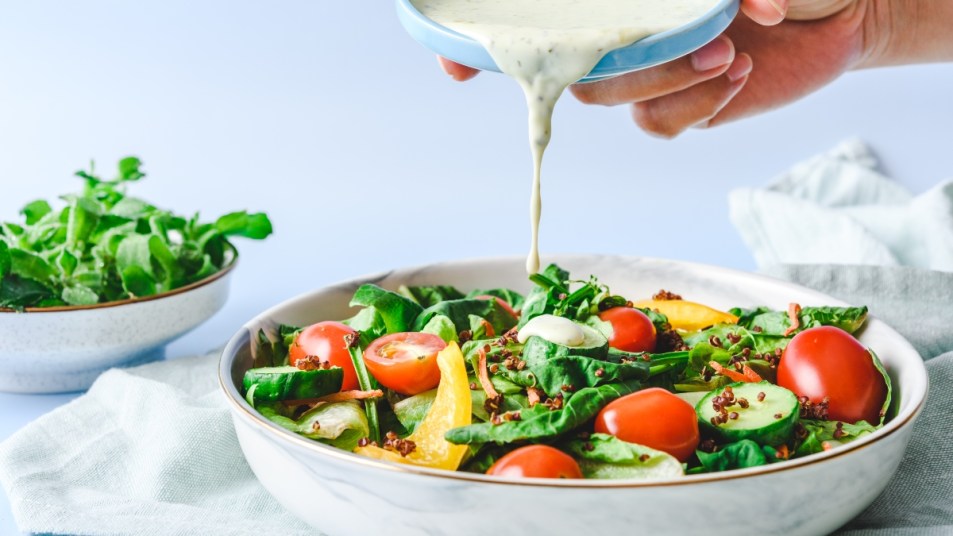Don’t Skip the Salad Dressing! Fats Make Veggies Healthier (Plus, 3 More Important Food Pairings)
Pass the butter, please.

It’s a well-known fact that butter makes everything better. It imparts a smooth, rich taste to anything it touches — but many of us avoid fats like butter because they’re, well, fattening. Good news: it turns out that butter can actually make things healthier. When paired with vegetables (in moderation), fats like butter make veggies’ nutrients more bioavailable, meaning you’re getting more health bang for your buck. Who knew? Keep reading to learn more about the relationship between fats and veggies, plus three other “food buddies” you should know about — foods that, when paired together, are healthier than when eaten individually.
Food Buddies: Salad and Dressing
Salad tastes better with dressing — and it’s better for you, too. Sound too good to be true? Check out this TikTok video from nutritionist Lisa Kilgour, in which she explains why people should pair their veggies with fats.
In her video, Kilgour explains that vegetables have vitamins A, D, E, and K, and that they are fat-soluble. This means the nutrients need to bind with fat in order to become available for our bodies to absorb them. She uses chard as an example, which is rich in vitamin K — a nutrient that helps deliver calcium to your bones. If you don’t pair a fat — like butter, olive oil, or avocado — with that chard, your body isn’t getting that vitamin K or calcium.
She also mentions that other produce, like red bell peppers and tomatoes, contain fat-soluble antioxidants like lycopene, which help the body fight inflammation and disease; adding a dietary fat like olive oil to your next tomato sauce will enable you to get the most of these antioxidants. Fat additionally makes the beta-carotene in carrots and sweet potatoes convert to vitamin A, which is important for eye health, skin, and immunity. So, don’t shy away from spreading butter on your baked sweet potato!
Other Food Buddies
Fats and veggies aren’t the only perfect pairing. Check out these three additional food buddies that boost each others’ nutrient absorption. An added bonus: They taste pretty great together, too.
1. Scrambled Eggs and Cheddar Cheese
Calcium is an essential nutrient for bone health, and it needs vitamin D in order for the body to absorb and use it. Pair vitamin D-rich egg yolks with some shredded cheddar cheese, which is high in calcium. Eat it al fresco on a sunny morning for an extra boost in vitamin D — and a really good start to your day.
2. Chicken and Broccoli
Vitamin C is pretty famous in the nutrient world. You’re told to get a lot of it in order to boost immunity when you’re sick. But it also helps your body absorb iron, which is important for helping red blood cells carry oxygen to the rest of your body. Iron is also a nutrient in which many women are deficient. So, pair iron-rich food like chicken with a helping of C-filled broccoli for a meal that tastes good and makes you feel even better.
3. Green Tea and Lemon
You might be putting a squeeze of lemon juice in your green tea already, because the citrus flavor complements the bright, vegetal notes of green tea. But did you know that the benefits of adding lemon to your green tea extend past flavor? Green tea is full of catechins, which are plant compounds that help prevent diseases like cancer. The vitamin C in lemon juice enables your body to absorb catechins more effectively, meaning you’re getting more benefit from the same amount of tea. Bottoms up!
The Bottom Line
If you have trouble eating enough vegetables, don’t feel guilty about dipping them in ranch or roasting them in butter. Firstly, some vegetables are better than none at all; and secondly, fat might make them healthier, anyway! Enjoy a meal full of your favorite food buddies, and don’t forget about dessert.













